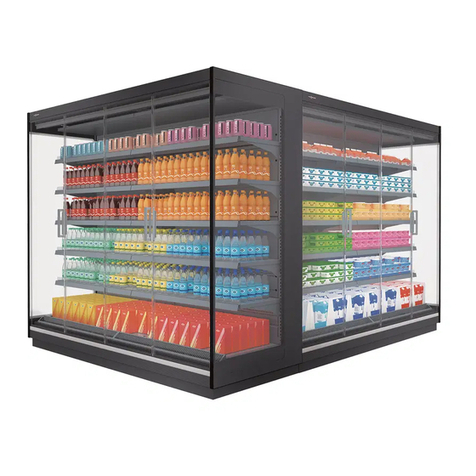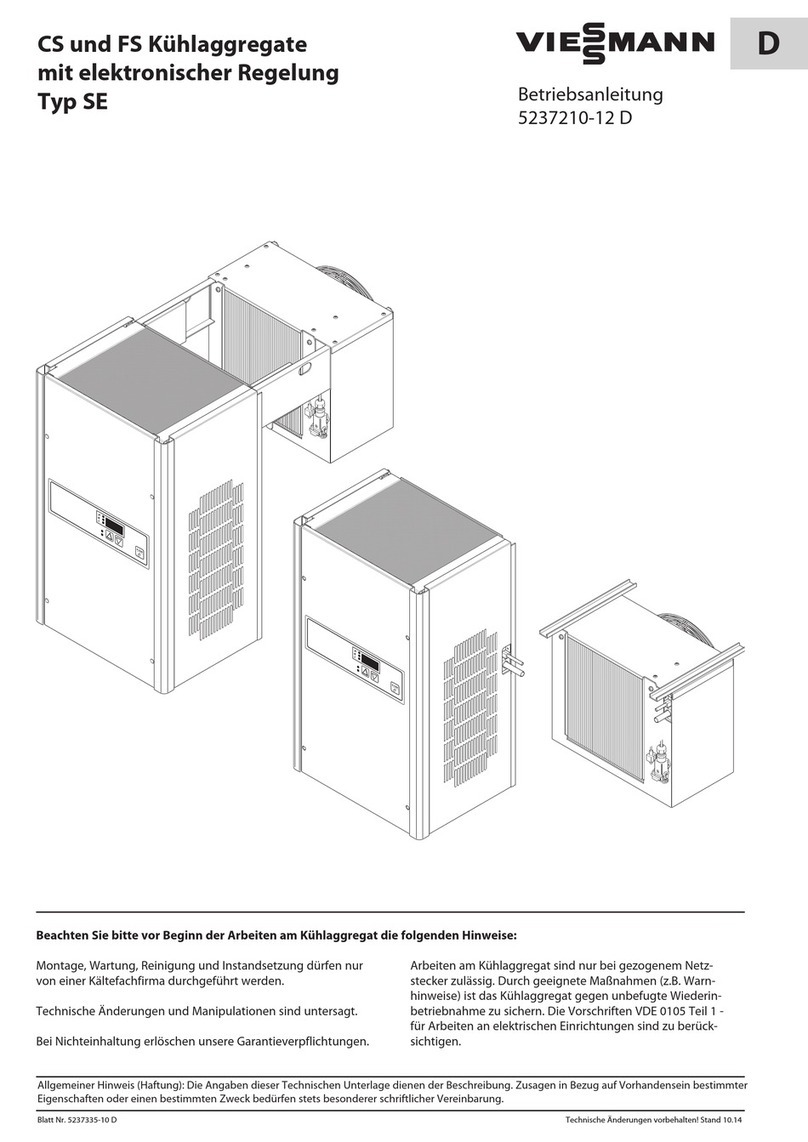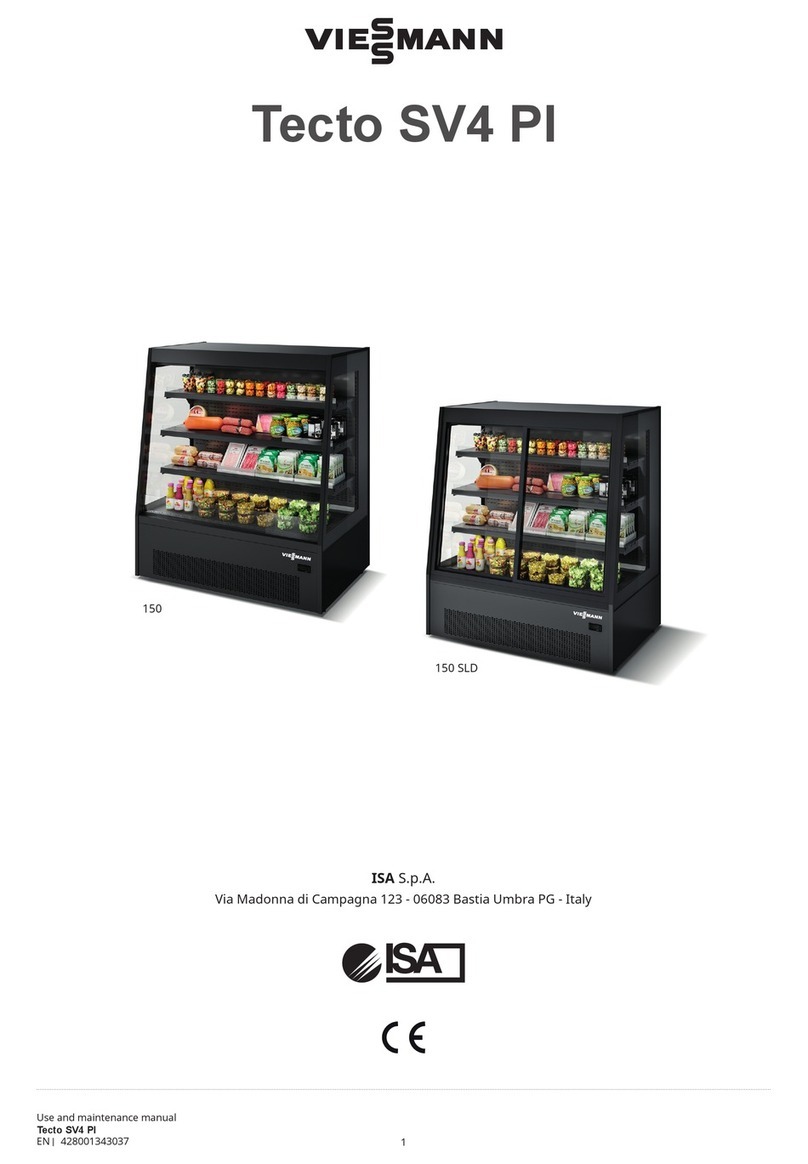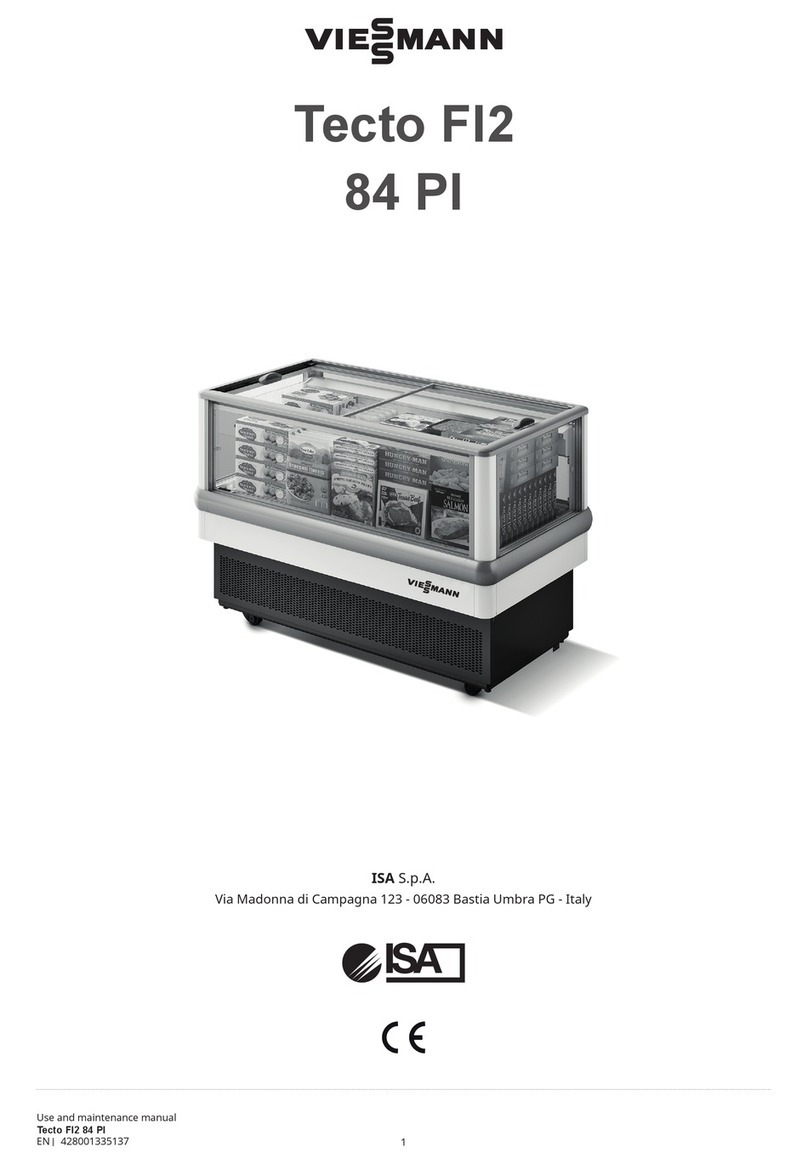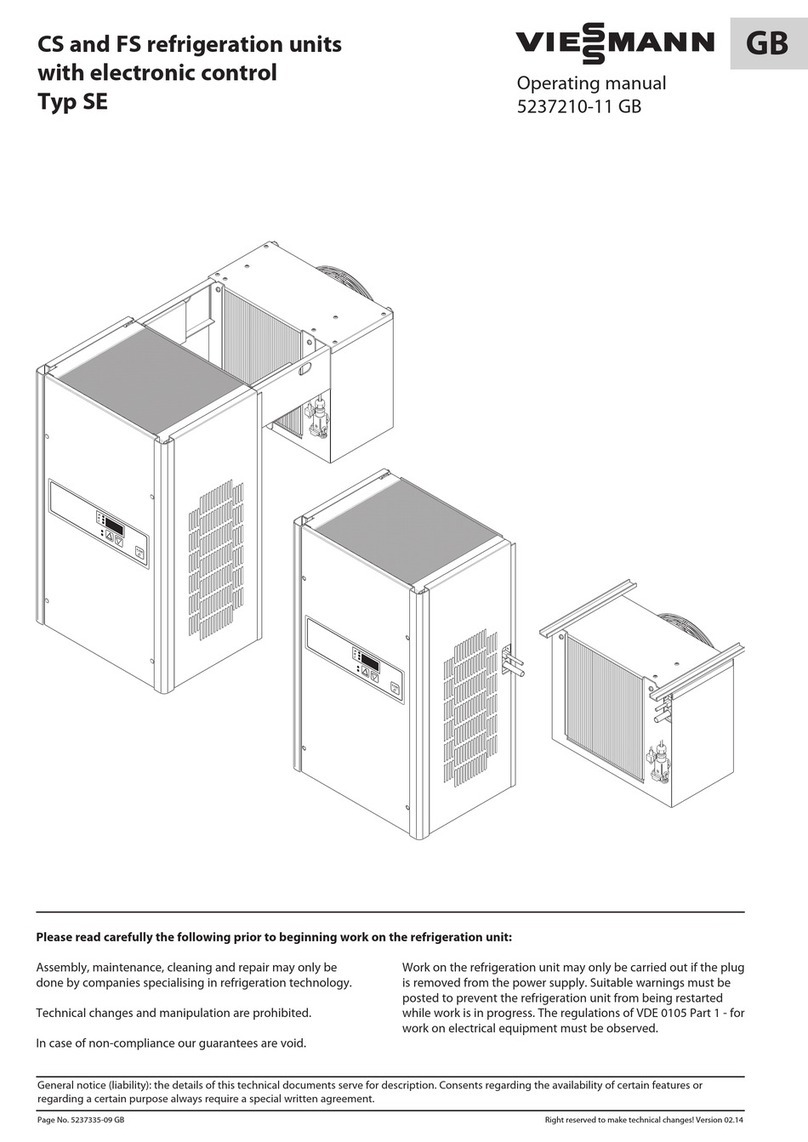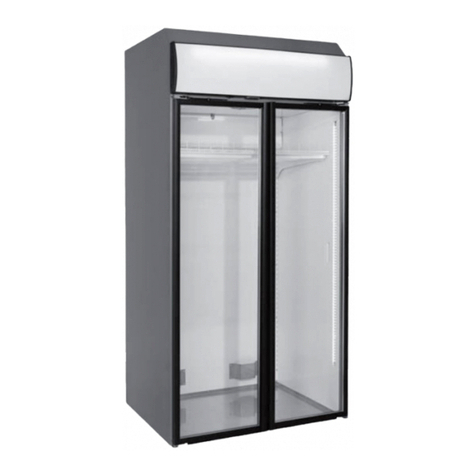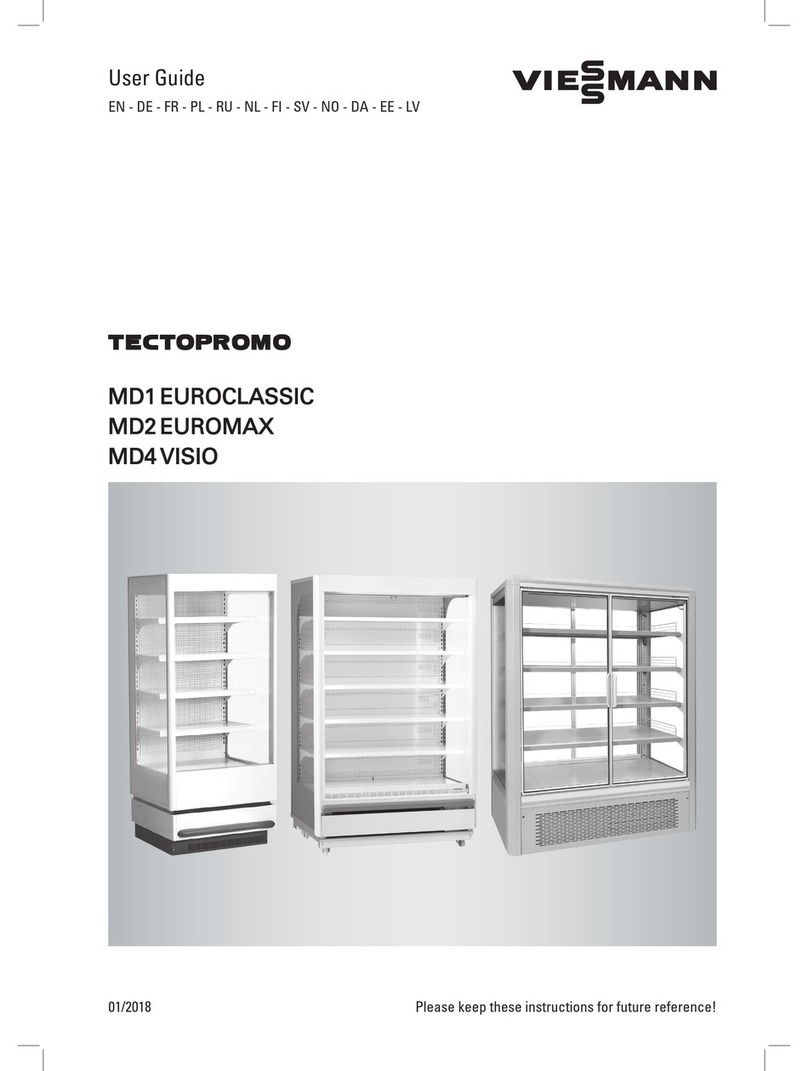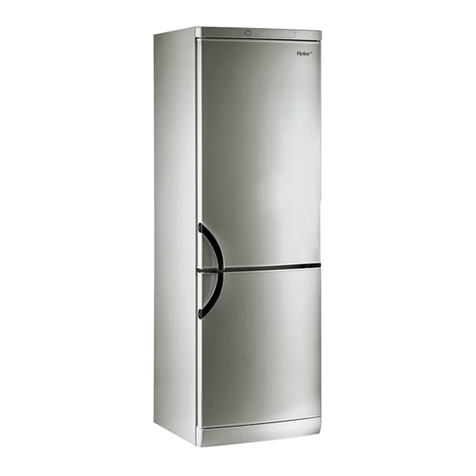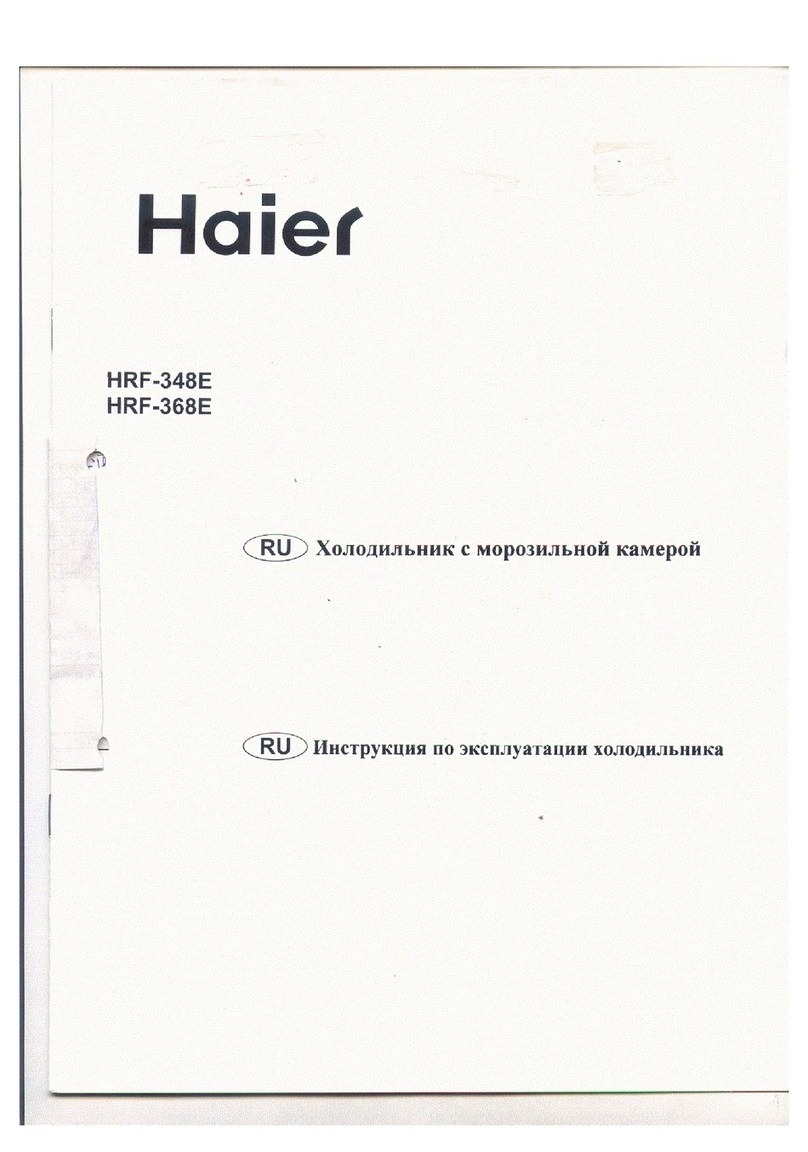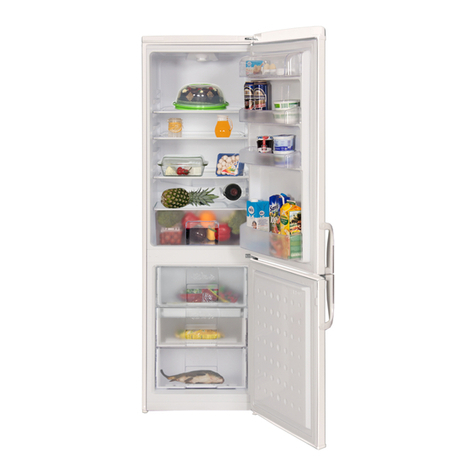
6
Assembly
5777744-03 GB Subject to technical changes!
Conditions for installation space
ÂDo not install TectoCell cold rooms and deep-freez-
ing rooms near heat sources.
ÂAvoid direct sunlight.
ÂMakesurethattheinstallationspaceissufciently
ventilated in order to discharge any heat that builds
up.
ÂDistance from TectoCell cold rooms and deep-freez-
ing rooms to building wall and ceiling:
Room temperature in positive range:
at least 50 mm
Room temperature in negative range:
at least 100 mm
The distance from the room to the wall must be
ensured with suitable spacers, since the room’s
position may slip depending on the load it is
under!
ÂObservespecicationsonthenecessaryclearance
above the TectoCell cold rooms and deep-freezing
rooms in the operating instructions of the unit in
question.
ÂObserveasuitableinstallationheightforoorprop
designs and add to it if necessary.
Conditions for outdoor installation
ÂMake sure that the TectoCell cold rooms and deep-
freezing rooms is not exposed to the effects of
weathering (snow loads, rainwater, wind pressure,
etc.).
ÂMake sure that local and on-site construction
measures to protect from the effects of weather-
ing have been completed before installing the
Tecto cold rooms and deep-freezing rooms.
ÂObserve national and local rules on work safety and
accident prevention measures.
ÂObserve local regulations on operation and mainte-
nance.
4.2 Before installation
ÂMakesurethattheoorislevel.
ÂLevelunevenoor(sieheKap.„4.3Bodenausglei-
chen“aufSeite7).
ÂContact Viessmann if it is not possible to comply
with national and local regulations.
ÂCarefully remove the elements and accessories.
ÂPre-sort the elements and accessories.
ÂDraw the footprint of the room on the installation
oorusingasuitableimplement.
4 Assembly
DANGER! Risk of death due to electric
shock!
fDo not conduct any mechanical
work
(suchasdrillingorsawing)onthe
inside or outside of the door or
porthole (see Chap. “4.19 Mechani-
cal work on the door or porthole” on
page13).
NOTE Damage due to improper han-
dling!
fEnsurethatthesealprolesof
the elements are not damaged.
NOTE Damage due to improper trans-
port!
fOnly carry room elements from
the bottom to prevent panels from
separating.
NOTE Damage due to improper mount-
ing!
fMake sure that room elements
are correctly mounted after assem-
bly.
NOTE Damage due to improper mount-
ing!
fMake sure that all preparatory
work for mounting units to the ele-
ments.
fObserve unit instructions.
4.1 Installation conditions
NOTE Damage due to condensation
water!
fMake sure that the installation
roomissufcientlyventilated.
fMake sure that all necessary
distances are complied with.
